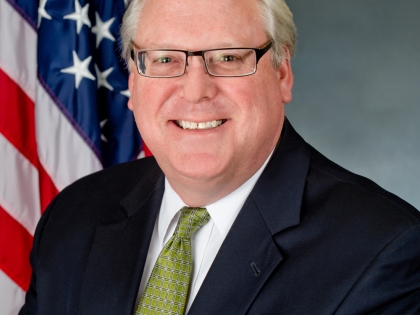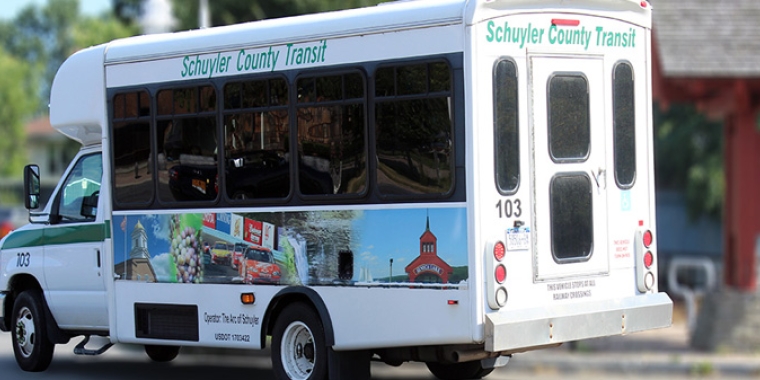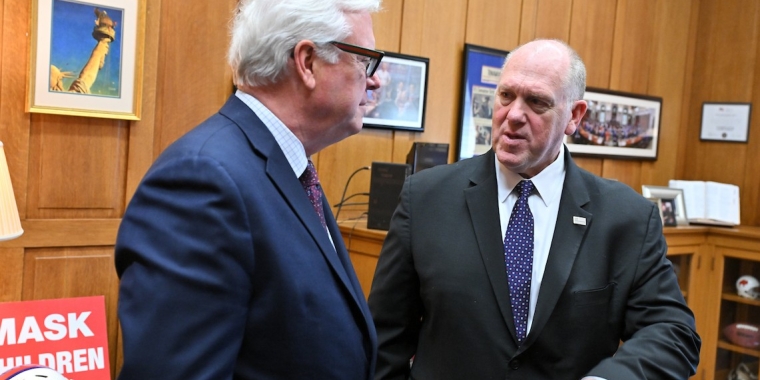
Senate and Assembly give final approval to O'Mara's legislation creating ‘Upstate Transit Funding Board' ~ O'Mara: 'The future of our rural, upstate public transportation systems is being put at risk by Albany's one-size-fits-all approach'

"The future of public transportation in our rural, Upstate regions is being put at risk by Albany’s ongoing attempt at a statewide, one-size-fits-all approach to these local systems," said Senator O'Mara.
Albany, N.Y., June 21—The New York State Senate has given final legislative approval to legislation (S8045/A8202) sponsored by Senator Tom O’Mara (R,C,I-Big Flats) to establish a new "Upstate Transit Funding Board" within the state the Department of Transportation (DOT).
“We need to take steps to ensure the long-term operation and viability of public transportation systems throughout the Southern Tier and Finger Lakes regions, and across upstate New York,” said O’Mara, a member of the Senate Transportation Committee, as well as the joint, bipartisan Commission on Rural Resources. “These systems provide critical links for thousands upon thousands of upstate residents and their jobs, medical appointments, school, shopping, and other destinations. Our public transit systems also stand as cornerstones of regional transportation systems vital to economic development, job growth, anti-poverty and housing initiatives, energy and environmental conservation.”
The legislation was sponsored in the Assembly by Assemblyman Anthony Brindisi (D-Utica) and was approved on June 9th. It now goes to Governor Andrew Cuomo to be signed into law.
O’Mara and other supporters of the legislation stress that fares alone are not sufficient to cover all the costs of providing public transit services and the systems must rely on annual state funding. He said that this legislation creating an Upstate Transit Funding Board would ensure that discussions remain ongoing to continually identify sustainable funding options to provide for growth and stability in the public transportation operating assistance, and create additional opportunities for supporting mobility options for upstate New York residents.
The future of upstate public transit systems has been an O’Mara priority over the past several years, particularly since the state’s ongoing Medicaid redesign strategy has included a shift over the past three years in the administration and management of Medicaid Non-Emergency Medical Transportation (NEMT) from localities to the state. It’s been viewed as a cost-cutting move by state officials, but a number of local public transportation officials from O’Mara’s district and across the Upstate region have continued to raise concerns about the plan and, especially, its long-term impact on rural communities and populations, including the disabled, elderly and the rural workforce.
“The Medicaid redesign effort in Non-Emergency Medical Transportation has resulted in a significant shift in public transportation services in many areas – from public transit buses to private taxi service -- but especially in rural, Upstate regions,” said O’Mara. “The future of public transportation in our rural, Upstate regions is being put at risk by Albany’s ongoing attempt at a statewide, one-size-fits-all approach to these local systems. It remains a developing crisis for many rural residents. So we keep trying to bring more widespread attention to the changes underway, fully assess the consequences for our counties and do what we can to ensure that the impact on rural, Upstate public transportation at least receives a full and a fair hearing.”
Over the past few years, O’Mara has held numerous meetings and forums, including a public roundtable in Cooperstown last July to hear from local officials, mobility managers, transportation providers and community organizations in Upstate rural regions who say that the new, one-size-fits-all approach, which might be workable in suburban and urban areas downstate, isn’t proving cost-effective or efficient in their rural communities. At the forums, officials from numerous counties, including all of the counties O’Mara represents as part of the 58th Senate District (Chemung, Schuyler, Steuben, Tompkins and Yates) have highlighted the shortcomings of the new system, including the elimination of existing transportation routes, the future of locally based cost-efficiency initiatives and the overall disruption of services to persons with disabilities, seniors and other local residents who have long depended on these rural public transportation systems.



